How to Record Your Performance
Built-in Recording
The easiest way to record your performance is to use the built-in recording feature launched with version 2.4.1. You can record up to 16 stereo mixes, plus the main mix, directly to disk.
Ableton Live Plugin
If you need more advanced recording features or workflows and use Ableton Live, you can use the Ableton Live Sensory Percussion 2 VST3 Plugin. This plugin allows you to load Sensory Percussion directly inside of Live, and record your performance as raw sensor data (a MIDI-like workflow), audio, or both. You can find more information on the Ableton Live Sensory Percussion 2 Plugin page.
The plugin is a standards-compliant VST3 and will load in other DAWs. However, we've found that most DAWs limit the number of input channels to the plugin to stereo, which means you will only be able to access two sensors. However, it will work in systems like MAX/MSP
Other Recording Methods
If you need to record to a DAW or need more advanced recording features, you can use one of the methods below. The first one is treating the Portal like its own instrument and using cables to record the output into another recording device, whether that be another computer or external recorder. The second option uses software to route signals within your computer to capture your recording.
This tutorial goes over how to record stereo out of Sensory Percussion, meaning 2 channels: one left and one right. However, with our new submix feature, you can now create as many output channels as you want and distribute your sounds across them however you like. The recording process will be the same, you will just need an additional cable/virtual audio channel for each additional submix that you create.
Physically routing audio from the Portal to another recording device
This scenario requires a second recording device (audio interface, Zoom recorder, mixer, etc.) in addition to the EVANS Portal. You're essentially treating the Portal like you would a guitar pedal or synth, plugging 1/4" audio cables into the Portal's main outs and connecting them to the inputs of another recording device.
Zoom recorders and mixers with recording capabilities don't require a DAW; they simply record audio onto an SD card. So if you're using one of these, the Portal is the only device that needs to be connected to your computer via USB.
If you're using a 3rd party audio interface, this interface and the Portal both need to be connected via USB. They can be connected to the same computer or two different computers. In studio situations where there is a computer built into a desk, it would make sense to have the Portal connected to your laptop sending audio to the studio computer's interface. But in a home studio setup where you only have one computer, you can connect both interfaces to the same computer via USB. Here's a diagram of this situation:
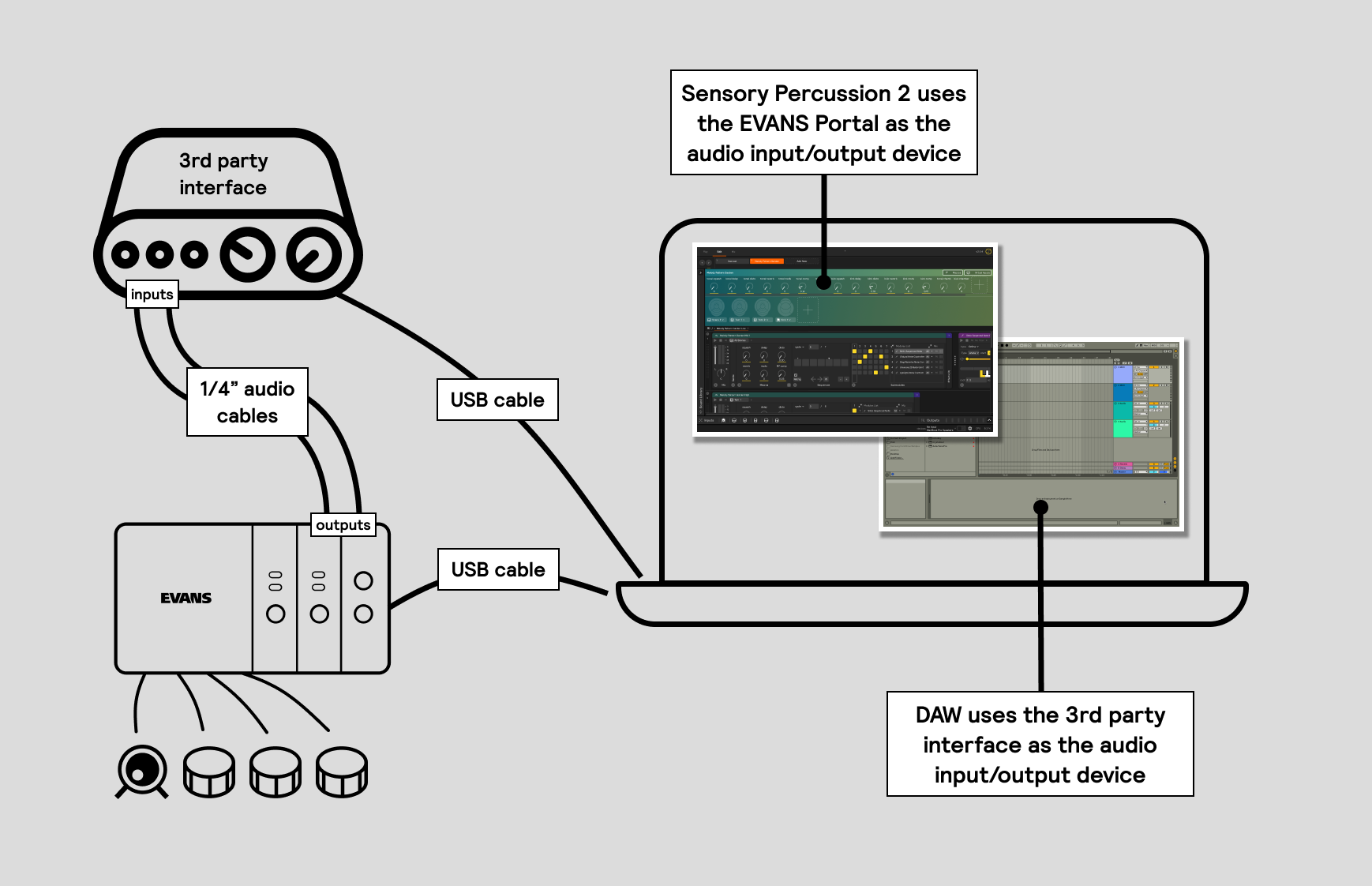
In this diagram, the signal flow goes from the sensors --> Portal --> 3rd party interface --> DAW
Using a virtual audio router to send audio to your DAW
You can use 3rd-party software to route the output from Sensory Percussion to a DAW like Ableton, Audacity, or Garageband. On macOS we recommend Loopback. There aren't as many options on Windows, but software like Voicemeeter should work.
This scenario doesn't require any additional cables or hardware, but it does require running 3 different pieces of software: Sensory Percussion, a virtual audio router, and your DAW. We'll go through a quick example of the common setup among our users: using Loopback on a Mac to send audio from Sensory Percussion into Ableton. This same process will also work with other operating systems/DAWs.
1. Open Loopback
When you open Loopback, there will be a virtual device already created by default. It should look like the image below, with a "Pass-Thru" as a source connected to two output channels. This device will automatically be named "Loopback Audio," but you can change the name by clicking the pencil icon next to the device name in the main window.
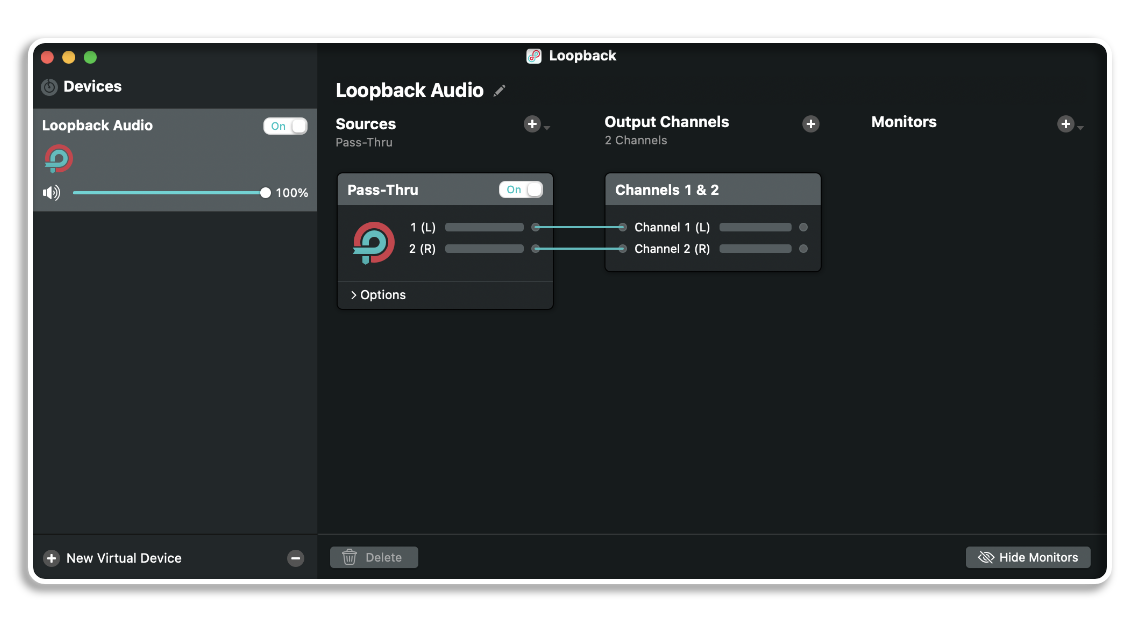
2. Route the output of Sensory Percussion to the Loopback Audio device
With Loopback still open, open Sensory Percussion and open the Audio Settings window with the shortcut ⌘ + ,. In this window, change the output device to the virtual audio device you just created in loopback.
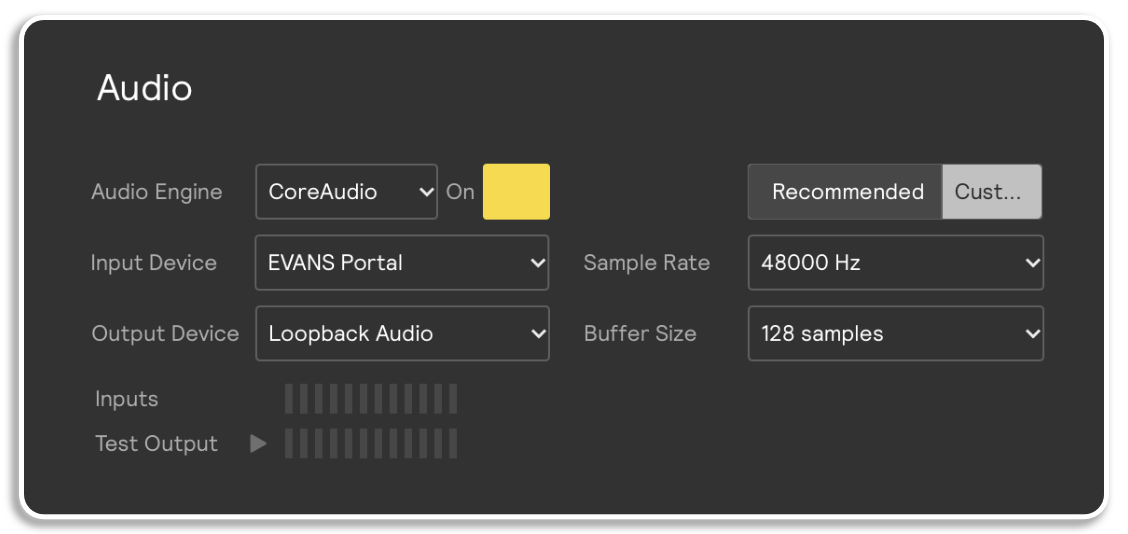
In this case, the output device is named "Loopback Audio," but if you changed the name of the device in Loopback, that will be reflected in the output device list in Sensory Percussion. Choosing the Loopback audio device as the output will automatically create a hardware output with the same name sending out of channels 1/2.
You should now see the blue VU meters moving in Loopback when you play the drums, indicating that it's receiving audio from Sensory Percussion, but you won't hear the audio until you complete step 3. It should look like the image below:
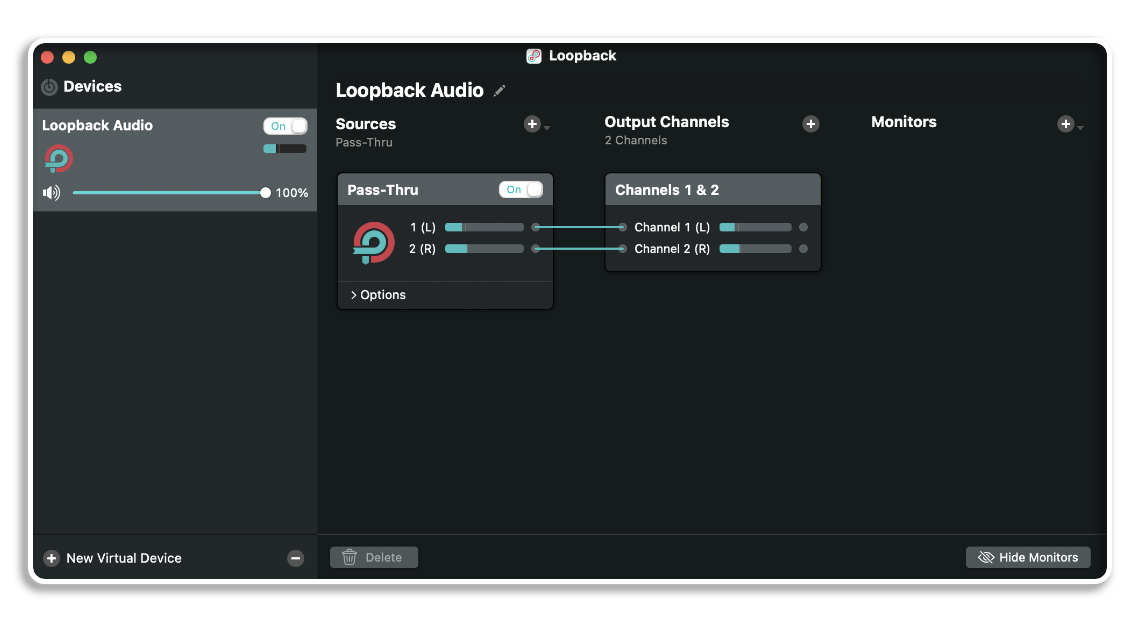
3. Set the Loopback Audio device the audio input in your DAW
This is the final step in the process, and it's essentially the inverse of of step 2. Open your DAW, then open the audio settings window (⌘ + , in most DAWs). Then, choose the Loopback Audio device as the audio input device.
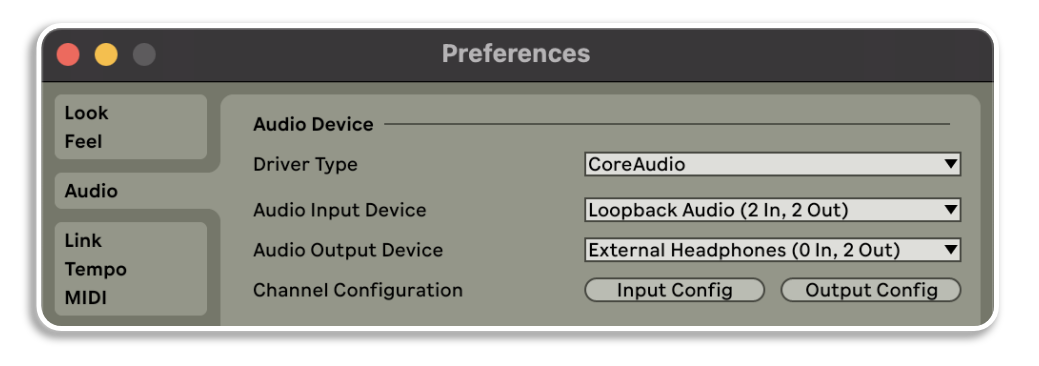
You should now be receiving audio signal in your DAW. To test this, create an audio track with channel 1/2 as the input. You will see that it's receiving signal from Sensory Percussion when you play the drum. You can turn monitoring on in that track to hear the output and hit record to start recording your Sensory Percussion performance!
This is the most reliable Loopback routing setup if you're using the EVANS Portal, but there are other configurations that will also work. Yours may look slightly different depending on your computer's operating system, any configuration changes you might have made in your "Audio MIDI Setup," additional hardware you have connected, etc. For more information on internal audio routing, check out the Loopback user manual.